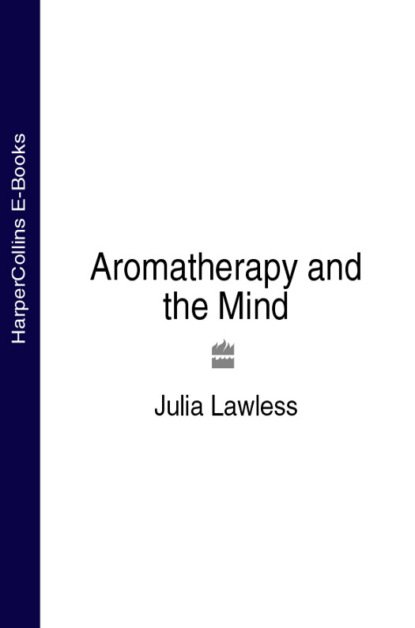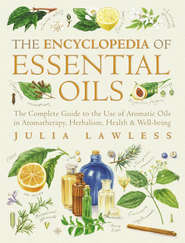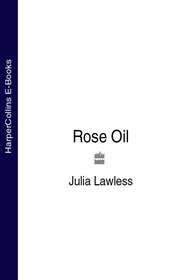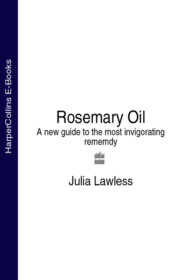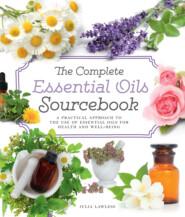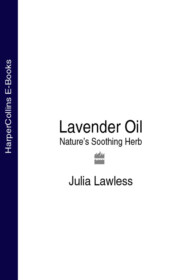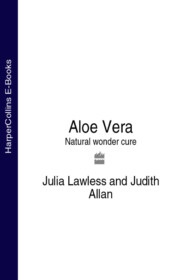По всем вопросам обращайтесь на: info@litportal.ru
(©) 2003-2024.
✖
Aromatherapy and the Mind
Настройки чтения
Размер шрифта
Высота строк
Поля
Arab physicians played an important role in the development of medicine, especially with regard to the prophylactic and therapeutic use of odours. By the third century AD, Alexandria was a vital centre and repository for Greek science and the Alexandrian School of Chemists was developing the process of distillation. Later, Avicenna (AD 980–1037) improved upon this process by inventing the apparatus and method of alembic distillation for the extraction of essential oils. He did much to promote the benefits of aromatic oils and their life-giving virtues:
For the Prophet … the interest in using excellent odours is that they fortify the senses. And when the senses are strong, the thoughts are strong and the conclusions upright. When, on the other hand, the senses become weak, thoughts become unbalanced and their conclusions confused.
(#ulink_08d54021-3933-5e56-9847-144f25cd3539)
The convergence between ancient ideas and contemporary Arab concepts influenced physicians to use essential oils increasingly for their purifying, restorative and reviving capabilities. Aromatics were back in vogue! They were thought to combat the organism’s destructive passions like fear and sorrow which make the body more susceptible to illness. Being surrounded by pleasant odours was consequently seen as a way of ensuring good health and preventing the spread of disease, especially during times of plague.
By the thirteenth century, ‘the perfumes of Arabia’ and the therapeutic use of aromatic oils had spread throughout Europe. In France during the 1348 plague, the Collegium of the Faculté de Paris prescribed the ‘cold’ scent of roses, sandalwood, nenuphar and camphor during the summer-time, and hot aromatics like eagle wood, amber, nutmeg, sweet gum or ‘pomander’ during the winter months. Pomanders, which originated in the East, were hollow spheres of ornamental gold or silver containing solid perfumes which only the rich could afford, such as musk, aloes, cinnamon and ambergris. In Britain during the Middle Ages, pomanders, scent boxes and ‘tussie mussies’ (little posies of aromatic herbs) were popular, while the floors of dwelling-places were strewn with sweet rushes, rose petals, lemon leaves, chamomile and other herbs.
In the minds of the common people however, perfumes were still bound up with magic and superstition. In the Anglo-Saxon Leech Book of Bald, a sprig of rosemary was recommended as a protection against evil spirits, while in the thirteenth-century Myddfai manuscripts, it says of the same herb:
If the leaves be put beneath your pillow, you will be well protected from troublesome dreams and all mental anxiety.
(#ulink_f88c4e44-239c-57ce-a203-40d93d346d71)
After the Protestant reformation of 1517, the employment of aromatics and incense in Britain was again reduced by the Church – only the Roman Catholic Church, with its emphasis on the symbolic value of ritual, retained their use. Seventeenth-century spirituality further strengthened the contempt for the senses and the physical body. The founder of the Order of Redemptorists laid great stress on olfactory mortification:
As for the sense of smell, do not be so vain as to surround yourselves with amber perfumes and other sweet smelling compounds or to use toilet water, all of which have little to recommend them, even to the laity.
(#ulink_0a3279bf-003a-5b3a-8c74-c32f0ec73cba)
The devaluation of the senses and their effect on the emotions was furthered by the philosophical climate as well as by ecclesiastical principles. René Descartes (1596–1650) defined man’s body as a machine with the soul located in the pineal gland at the base of the brain and to John Locke (1632–1704), who saw all knowledge as built up from bodily sensation, emotion was purely physiological. For the healing arts, the direction given by Descartes’ work was a turning-point – mind and body were conceived as having no relationship to one another, and the concept of ‘soul’ was eroded.
Throughout the eighteenth and early nineteenth centuries, the emotions were given a visceral location, though controversy became acute at this time over whether disorders of the mind brought about physical changes in the body or whether physical disease upset the mind. In 1763, the physician Gaub wrote a response to Julien La Mettries’ essay ‘Man, a Machine’, which he summarized in the following way:
1) The causes and occasions of a great many affections of the body arise in the mind.
2) The mind can be a bulwark of health.
3) In many cases of bodily disease treatment must be directed against the mind as the source of the bodily complaint.
4) Bodily diseases may often be more readily alleviated or cured by the mind, that is, by the emotions, than by ‘corporeal remedies’.
(#ulink_729b022f-dea6-58c1-b028-f35ab5161601)
Gaub recommended that physicians should actively search for substances capable of affecting the mind and that it would be a ‘happy and fruitful endeavour for some far-sighted persons to occupy themselves with a subject of such importance’.
(#ulink_06de7624-f7c1-57d8-9758-7044305766cb) One such ‘far-sighted person’ was Charles Fourier, an ardent defender of the emotions, who even as a child dreamt of subjecting ‘aromas’ to true scientific study. He set about cultivating a wide selection of aromatic species and conducted a series of personal experiments on the effects of their fragrance. He believed that perfumes, being linked to the powers of attraction or aversion, pleasure or repulsion, served to ‘guide men and beasts’ on an instinctual level. Apart from its profound influence on the human and animal passions, he saw scent as being fundamental to all existence.
Fourier’s notion of a cosmic olfactory foundation to all of life was to anticipate the results of contemporary astrophysicists by nearly 200 years. Results of the recent Arome experiment carried out by the French National Centre for Scientific Research include one highly important discovery:
It has been found that aromatic molecules are one of the basic components of the interstellar space in which new stars are constantly being formed. This interstellar ‘atmosphere’ or gas is the almost direct source of the atoms of which we ourselves, along with the earth and the other planets, are made.
(#ulink_07cbc5cf-99e1-5d4e-9f18-7bc47d410415)
A MODERN MARRIAGE
Human consciousness has moved forward and the individual perception of the universe is very different today from that of 6,000 years ago. It is fruitless simply to try and return to the primitive magico-religious approach to healing methods in an attempt to compensate for the materialistic approach of the previous era. Yet some type of integration is required and looking towards the East can perhaps provide an inspiration. Some of the oriental traditions, such as the Indian, Chinese and Tibetan medical systems, have not suffered from the same mind/body split as has the Western approach:
… where the Greeks were ready to apportion separate spheres of influence to the natural and the supernatural, and therefore created the terrain in which a strictly material interpretation of disease could grow, Hindu Philosophy kept the two spheres closely intermingled, giving rise to a medical system in which non-material aspects could have as much, if not more, influence than material ones.
(#ulink_2d74a4cd-ca48-5848-b390-7e255cbcf372)
The Indian medical system, which has its origins in the magico-religious vision of the Vedic literature, has evolved into a sophisticated evolutionary classification of matter and spirit based on Hindu philosophy. Life is regarded as the mutual interaction of body, mind and soul, where the mediating factor is the life-force or prana (in Chinese chi). According to this system, there are two primary principles, known as purusa and prakrti (similar to the Chinese yin–yang system). The former is passive and connected with the spirit; the latter is active and represents primordial matter, which in turn gives rise to sattva, rajas and tamas – the essence of thought, energy and matter. Indian medicine is consequently divided into three parts: Unani, which uses prayer and invocation; Sidhata, which includes knowledge of the chakras, the means for the transformation of energy within the individual; and Ayurveda, which is the knowledge and use of medicinal plants for healing purposes. In Ayurvedic medicine, a form of aromatherapy has been practised as one element of holistic treatment for thousands of years. Many aromatic plants are included in the making of medicinal oils for massage, or mixed with wine or honey as internal remedies.
Since aromatic essences also contain the life-force of a plant, they can help re-activate or harmonize the prana or chi within an individual, which is vital to the overall healing process.
Some remedies, on the other hand, are most effective in the form of an incense, fumigant or inhalation, especially for the treatment of psychological disorders.
The Tibetan remedy ‘Aquilaria A’ contains 31 ingredients, including eagle wood, clove, cardamom, myrrh, sandalwood and nutmeg, and its inhalation is especially recommended for insomnia, anxiety, tension, hysteria and other psychological symptoms. Like the Indian approach, the Tibetan view of medicine is that a permanent cure can only take place when spiritual, emotional and physical factors are in harmony. A physician’s prescription can consequently include advice on specific spiritual or ritual practices, as well as the administration of physical remedies.
The Western approach to medicine is beginning to change. Current attitudes reflect the growing recognition that disease is psychosomatic in nature and that it is not enough to treat a person simply on a physical or chemical basis – the individual as a whole needs to be taken into account. The twentieth century has seen an enormous growth in holistic forms of medicine and a vast increase in the use of natural remedies. Many ancient forms of therapy are enjoying a revival, but in a modern form – including aromatherapy. For although the term ‘aromatherapy’ is new, the practice itself is founded on a system which has been in use for thousands of years. When the French perfumer René Gattefossé published his book Aromathérapie in the 1920s, describing the physical and psychological benefits of using natural aromatics, particularly essential oils, in therapeutic practice, he was simply reviving and updating an ancient healing system. In contemporary aromatherapy, we are in fact witnessing a marriage of the traditional and the modern, the spiritual and the scientific, although the integration is by no means complete. The conflict between ‘orthodox’ and ‘alternative’ types of treatment is still being fought, as Western medicine struggles to find a more balanced perspective.
One point is clear; in the present century the importance of the person has reached a new phase … To realize that the patient is a personal as well as a chemical and physical entity is to realize that disease may arise at a personal level; that health consists of an harmonious blend of human physics and chemistry with emotional urges.
(#ulink_9a67c8f8-ded9-5148-8194-e8bdfa8978e9)
In recent years James Lovelock has popularized the Gaia principle, named after the Greek goddess of the earth. According to this theory, our whole planet is itself a living being with its own spirit or intelligence, in which all of existence participates. This new approach, which reconnects humanity with nature and re-endows matter with consciousness, heralds a return to the primitive yet transformed principle of an inherent sacredness or spirituality within the universe. It is significant that the latest advances in biochemistry and molecular physics also corroborate this vision – that of a universal ‘mind’ or ‘consciousness’ which transcends space or time:
Paradoxically, this new dimension of mind is also what reconnects each of these sciences to their ancient roots before there was a division between mind/spirit and matter. On a fundamental level, this is what aromachology and psycho-aromatherapy are really about, the reintegration of mind and fragrance.
(#ulink_0007d0df-cda6-54fd-91fd-0e621f05c78a)
REFERENCES
1 (#ulink_bc2a76e9-bc51-5e19-9efc-391050ad5dec). Malinowski, 1929, cited in Schleidt, M., ‘The Semiotic Relevance of Human Olfaction’ in Dodd, G. H. and Van Toller, S., Fragrance: The Psychology and Biology of Perfume II, Elsevier Science Publications Ltd., 1992, p.47.
2 (#ulink_21d99e04-7ffb-5937-99dc-2aec8eb7c3cc). Ie Strange, R., A History of Herbal Plants, Angus and Robertson, 1977, p.47.
3 (#ulink_439599ef-aa2b-5e66-a0c5-c8eeaeb645d4). British Herbal Pharmacopoeia, British Herbal Medicine Association, 1983, p.115.
4 (#ulink_e9f5e7bf-1e57-51ce-a2f3-c1b1607e9d74). Whitebread, C., The Magic, Psychic, Ancient Egyptian, Greek and Roman Medical Collections, US National Museum, p.3.
5 (#ulink_eeb3fac7-42db-54e9-bbff-840e5f32537f). Alexis.
6 (#ulink_5391e3c4-03c3-5dc8-9b45-4f0606502feb). An ancient Babylonian tablet, cited in Tisserand, R., The Art of Aromatherapy, C. W. Daniel, 1985, p.20.
7 (#ulink_108ab565-14e8-599a-b876-909a869ce614). Plutarch.
8 (#ulink_92f9c368-819c-5dbe-977c-ecc5562b9df5). Homer, The Odyssey, IV, pp.220–32.
9 (#ulink_537ceb06-081b-5ac8-b2f8-b778f9351012). Whitmont, E. C., The Return of the Goddess, Routledge and Kegan Paul, 1983, p.49.
10 (#ulink_d7847ac8-13a7-5161-9a29-e9e62200210c). Hippocrates, Humours, cited in Castrén, P., Ancient and Popular Healing, Vammalan Kirjapaino Oy, Vammala, 1989, p.91.
11 (#ulink_0994b4b0-5997-5243-839f-259924235ac3). Ibid.
12 (#ulink_383b67fc-ba0b-5f36-b6fc-57372311931d). Galen, De simlicium medicamentorum temperamentis ac facultatibus 6, XI, p.792.





